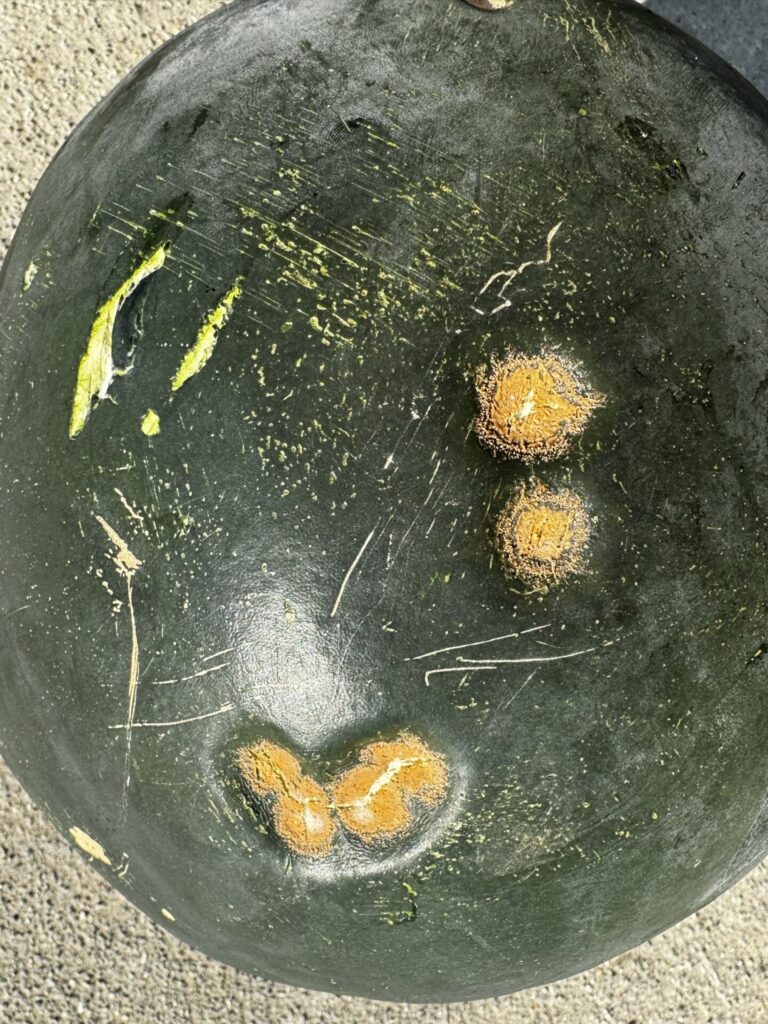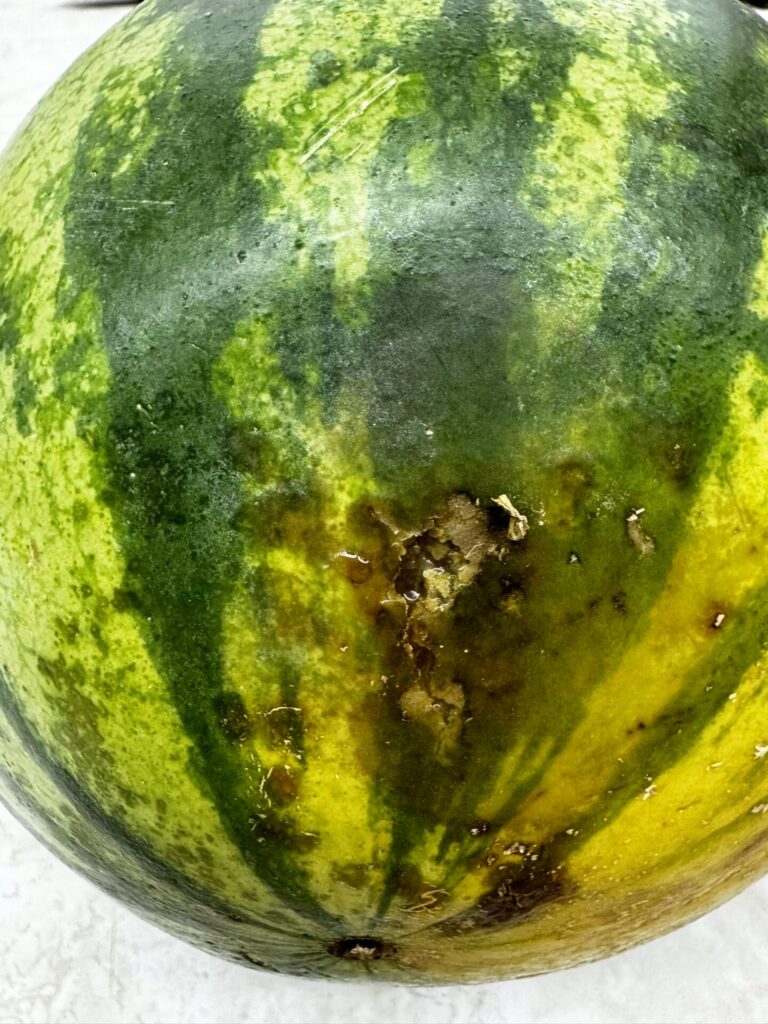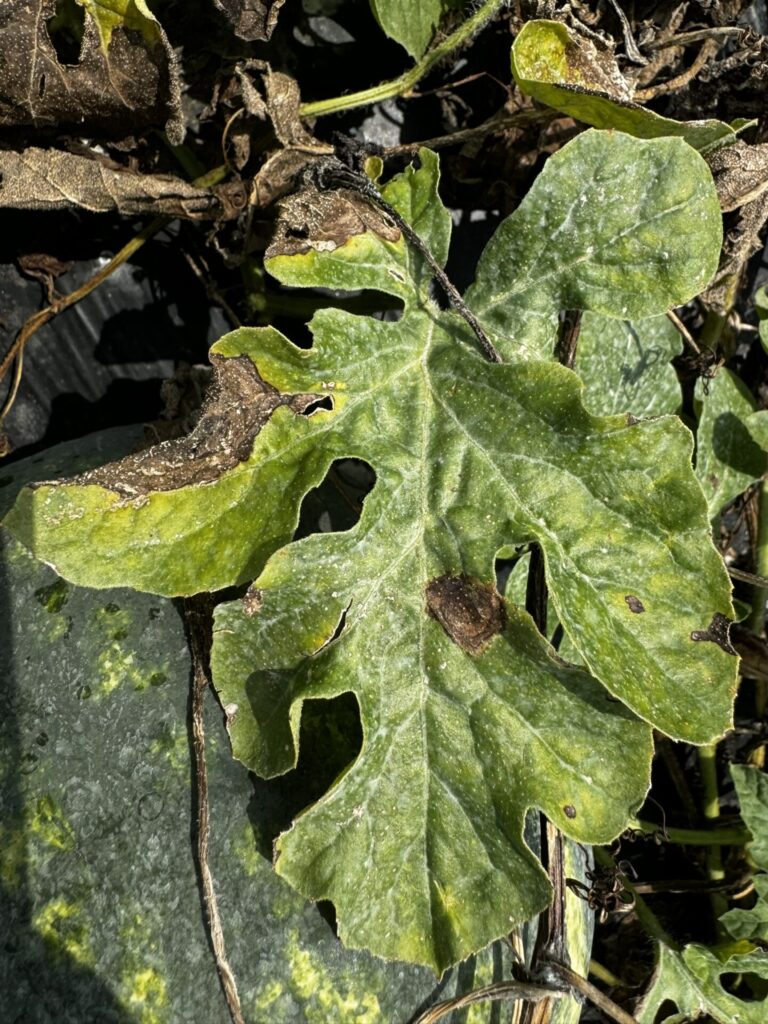Multiple foliar pathogens (some of which are also major problems for fruits) are appearing in watermelon and cantaloupe crops. It is time to continue or begin fungicide applications to prevent diseases such as gummy stem blight (Figure 1), anthracnose (Figure 2), and Phytophthora blight. During recent field visits, I have observed gummy stem blight and anthracnose. Although Phytophthora blight is a major pathogen during the fruit stage, I have not yet observed an outbreak.

Figure 2. Mature watermelon fruit affected by anthracnose. Notice the sunken, circular lesions with a pinkish color produced by conidia aggregates. Anthracnose can also affect leaves, which may later infect fruits in the same field (Photo by Cesar Escalante).
Many pathogens remain latent in the plant, simply waiting for the right environmental conditions to initiate infection and spread. As we all know, preventive fungicide applications are important because they are more effective in slowing disease development when inoculum levels are low, rather than when disease severity and incidence are already high. Many growers have been alternating contact fungicides with systemic fungicides, which is a good practice. Please continue this practice to help prevent the three main pathogens mentioned above.
In the specific case of Phytophthora blight, it primarily affects watermelon fruits (Figure 3), while both leaves and fruits are affected in pumpkins. Many watermelon fields in southern Indiana were planted a bit late this year due to the cold temperatures early in the season. As a result, some watermelon plantings are currently at the softball stage (many have just passed this stage), which is an ideal time to begin fungicide applications to prevent Phytophthora blight infections. These applications can be continued on a weekly or bi-weekly basis, depending on weather conditions. For pumpkins and squash, make preventive fungicide applications at the bush stage. Remember, this pathogen thrives in warm and wet conditions. It can be more prevalent in field areas with prolonged water saturation and poorly drained soils. These areas require special attention, as they are where the disease can become a major problem.

Figure 3. Mature watermelon fruit infected with Phytophthora blight. The fruit tested positive using ImmunoStrips in the lab (Photo by Cesar Escalante).
For a complete list of fungicides to use for managing the diseases mentioned here, visit the Midwest Vegetable Production Guide. You can also refer to the factsheet titled Managing Phytophthora Blight of Cucurbits for a comprehensive list of products and cultural practices that can be used to manage Phytophthora blight.
Additional resources
Egel, D. Managing Phytophthora Blight of Cucurbits. 2020. BP-204-W. Purdue University. https://edustore.purdue.edu/bp-204-w.html
Midwest Vegetable Production Guide. 2025. https://mwveguide.org/guide
